Is it a Triffid?
This week: Weather and climate; Show your stripes; Is it a Triffid?; Need a big magnet; Part 1 finished; Law of Unintended Consequences;

I finally waved goodbye to the builders on Tuesday morning. They removed the last of their equipment and left-over materials, then left. Now my work starts.
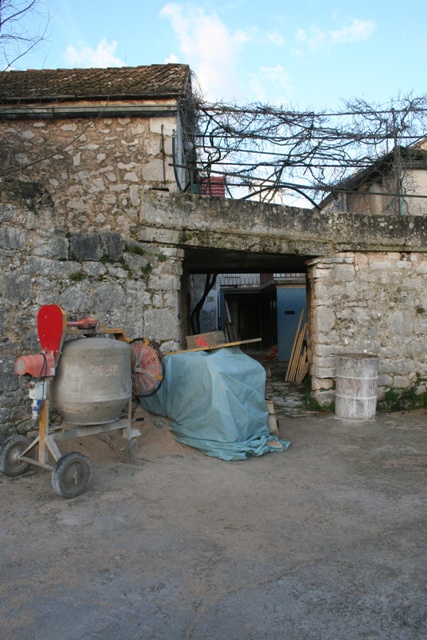
I have the shell of a building which needs finishing. So the first task was to work up a planning list. Then I paid a couple of visits to Volat in Stari Grad to buy some of the essentials I will need to make the workshop operational.
There are lots of jobs to be done both inside and outside. But at least as another Saturday rolls round again, I’ve made a start on some.
Weather and climate
I’m struggling to make sense of the statistics that my annual Springwatch Calendar is producing.
Part of the problem is that I only started in 2015, with just a dozen indicator species. It was my first year here and I didn’t know what to look for.
Over time I have changed the use of my land. I have moved plants, bulbs and saplings around, changing the layout considerably and even removed a diseased mature tree.
Entire areas have been changed into orchards. But all this has an effect on things which grow.
I’ve added more key species to the calendar as I’ve gone along too, just for good measure. There are now 73 indicator species of plants, insects and birds.
So I am looking at this years figures so far. My recording started in December with the appearance of the first buds on the Paper Whites, Narcissi tazetta, on 14/12/2019.

Overall, everything is an average of a week earlier than last year. But then last year things were a week later than the 2018 Spring.
I think this will be another of those “ask me in ten years time and I’ll tell you” questions.
I need a lot more annual data before I will be able to give a clear answer on the relationship between climate change and an advancing Spring here in Dol.
What is apparent from the first eight weather reporting periods of 2020, is the average temperatures. I have recorded much higher than average winter temperatures, both maximum and minimum, in common with the rest of Europe.
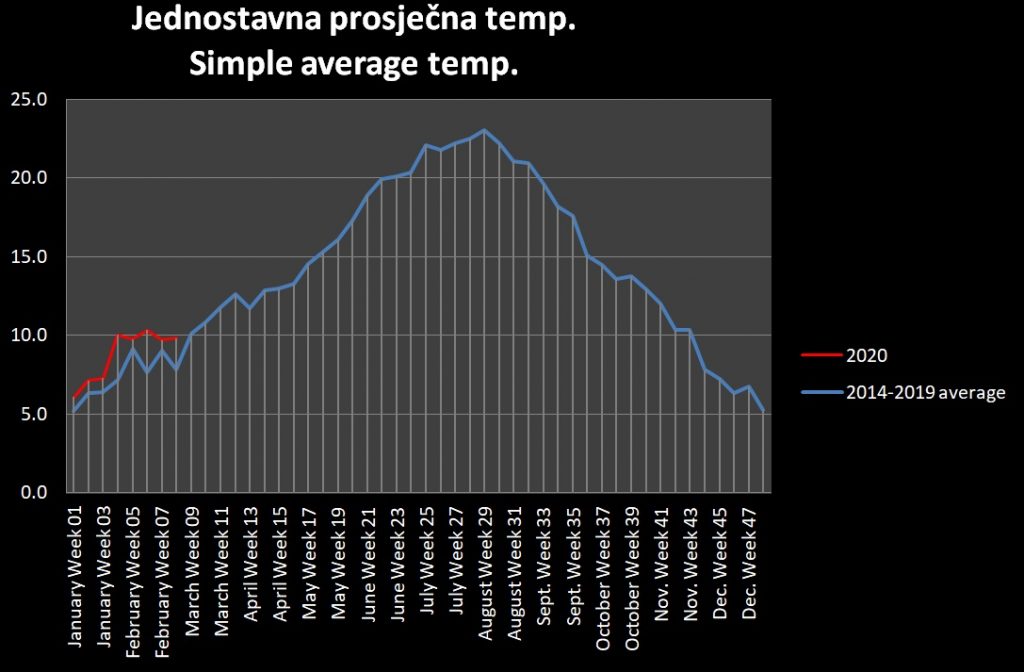
The winter rainfall (November to March) is still above the average which this area normally receives. However we received it all in November, so now everything is dry.

On the annual calendar rainfall scale, we are 150 mm or more below the average.
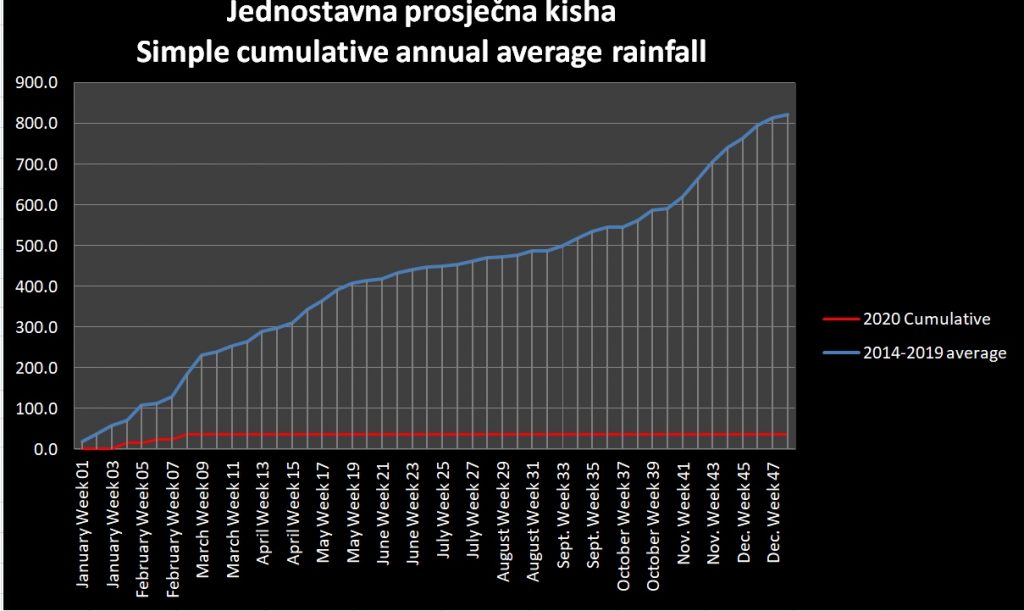
These last figures show how just two graphs, of exactly the same measurements can show totally different things.
In one it appears we are way above the average and on the other we are way below. The actual effect is closer to the calendar rainfall. This is because all the rain in November has gone and my soils are dry, to the point of needing water for some plants.
The Copernicus Climate Change Service (C3S) announced this week that the 2019/2020 European Winter has been the warmest ever recorded. It has been 3.4°C warmer than the average winter for the period 1981-2010. The temperature was almost 1.4°C higher than that of the previous warmest ever winter, that of 2015/16.
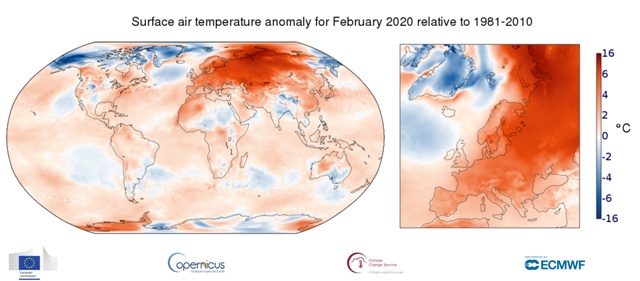
The above charts show the winter 2019/2020 surface air temperature anomaly measured against the 1981-2010 data
If you are interested in European data and have never looked, the C3S website is worth exploring.
With rain showers on Friday, I brought out some of my over-wintering plants, things like the Strelitzia and a lovely California Gold Bougainvillea for a drink of the best water they can get.
Show your stripes

Have you noticed this image or variations of it appearing publicly?
These are Climate Stripes and they are personalised for my area of south eastern Europe. #ShowYourStripes
In May 2016, to make visualising climate change easier for the general public, University of Reading climate scientist Ed Hawkins created an animated spiral graphic of global temperature change as a function of time. He called them warming stripes.
His easy to understand representation quickly went viral.
These ‘warming stripe’ graphics are a very visual representation of the change in temperature as measured in each country over the past 100+ years.
Each stripe represents the temperature in that country averaged over a year. For most countries, the stripes start in the year 1901 and finish in 2018. But for the UK, USA, Switzerland & Germany, the data starts much earlier, in the late 19th century.
In virtually every country or region, the stripes turn from mainly blue to mainly red in more recent years, illustrating the rise in average temperatures in that country.
The graphics are specifically designed to be as simple as possible, and to start conversations about our warming world and the risks posed by climate change.
There are numerous sources of information which provide more specific details about how temperatures have changed, so these graphics fill a gap and enable communication with a minimal scientific knowledge required to understand their meaning.
The data for most countries comes from the Berkeley Earth temperature dataset, updated to the end of 2018. In respect of a few countries (UK, Switzerland, Germany and the USA) the data comes from the relevant national meteorological agency.
For each country, the average temperature in 1971-2000 is set as the boundary between blue and red colours, and the colour scale varies from +/- 2.6 standard deviations of the annual average temperatures between 1901-2000.
The Climate Stripes graphics are free for anyone to use. The hashtag is #ShowYourStripes
Is it a Triffid?
I grew up on science fiction stories, for example The Domes of Mars, A wrinkle in time and the classic Day of the Triffids. I was a voracious reader of the genre.

The word “Triffid” has entered the universal English lexicon to describe any growing plant, man eating or not, which seems to be larger than normal, less controlled, or has an exponential growth habit.
Last year my neighbour gave me a small cutting from his bog garden at home. I planted it in a pot and put it into a water filled paint tub to overwinter. This spring it has been growing explosively. It obviously likes the conditions and location it is in.
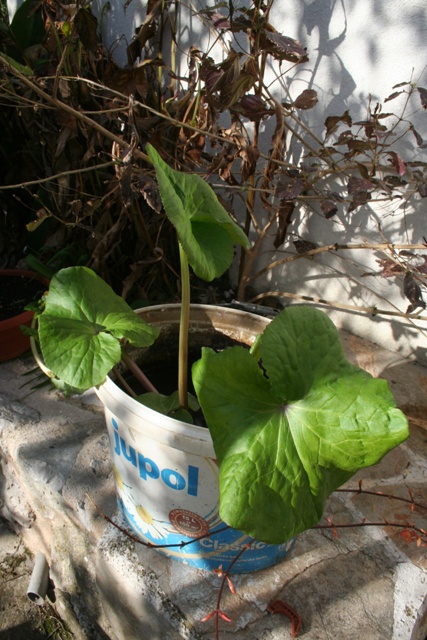
Steve told me that it was a Marsh Marigold, Caltha palustris. Now coming from north east Yorkshire, I know Marsh Marigolds well – they used to grow on the River Ouse alluvial flood meadows opposite my childhood home.

What I have discovered this week though, is that there is just a wee bit of regional variation between plants.
My memory of the Marsh Marigold was a sea of yellow flowers in the spring, extending across the Rawcliffe Ings.
These are diminutive plants, nestling amongst the grasses, that bloom early and quickly set seed.
This week I have moved my gifted Marsh Marigold into a larger container and instead of sharing, it is now on its own. I’m pleased I found out about this southern variety before I planted it out in its final position. Because with such a large growth habit it would quickly overpower surrounding plants.

To me, it fits the definition of a Triffid, even if its flower isn’t flesh eating.
If you do want some interesting flesh eating plants to grow at home, you couldn’t do better than try the Triffid nurseries.

Or for something really painful, how about the Suicide plant, Dendrocnide moroides, an Australian native with a sting 1,000 times more powerful than a garden stinging nettle. You will feel its sting for 9 months…
Stinging Nettles by the way, are one weed that I don’t seem to have!
Need a big magnet
I have already mentioned that I waved goodbye to the builders this week.
All the support jacks and shuttering has been removed. The builder expressed satisfaction with the way that the concrete ceiling has set. It is smooth, and with just an odd rough edge to grind smooth, could probably be painted without further work.
Not so my courtyard. This is the very rough sand, which will soon (hopefully) be covered with nice stone sets. However in the meantime I need to get my car in.
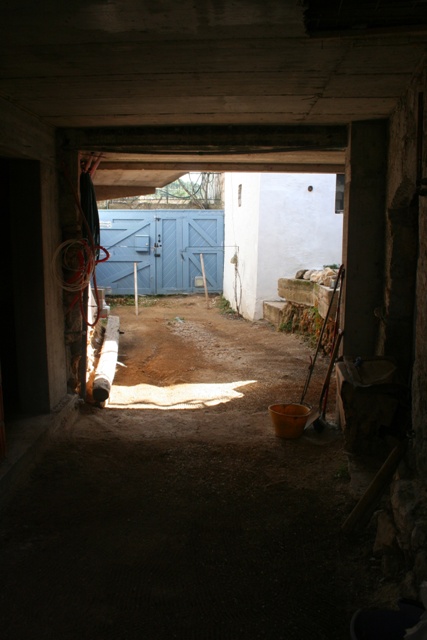
But what has happened is that as the builders removed the wooden shuttering, de-nailing the timber as they went, all the nails that were used to fix pieces of wood together were removed and dropped where they stood.

The result is that there are literally dozens of 50 mm nails, some straight, most slightly bent, but all still with sharp points, that have been liberally spread across the yard.
I have started the clean up, removing the builders detritus and at the same time trying to find and remove all the nails.
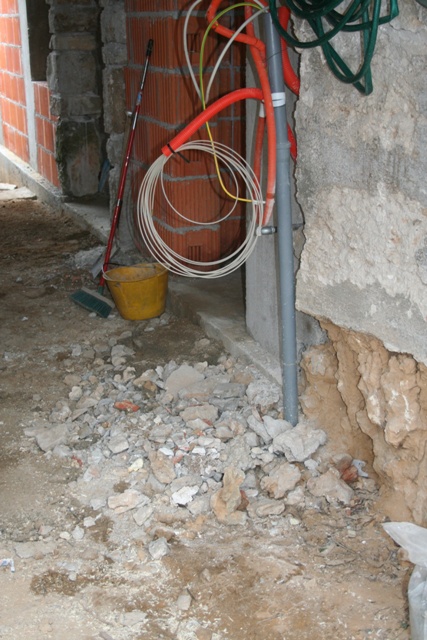
Sharp nails and vehicle tyres do not mix. Before I bring the car into the courtyard, or any other vehicle for that matter, I want to be as sure as I can be that there are no nails left.
This problem reminds me of a question I was asked some years ago, by a non-aviation person in Abu Dhabi, about the capabilities of the police helicopter unit. “Sir, does the Air Wing still have the big magnet to pick up cars?”

I had to let him down gently, and I don’t mean in his car!
However, even a moderately sized magnet might help me to find some of the nails, before they find their way into the tread of one of my tyres.
Part 1 finished
The builders cleared the last of their materials and left on Tuesday morning. I now have vacant posession of the extension. The next job is to do the finishing of the inside.
The walls are bare and need to be rendered, then there are the windows and doors to be fitted. The floor needs to be painted and when all the walls are finished, I can start fitting the room out with shelving.
There will be some constructing that I will need to do. I need a purpose built workbench that will fit against one wall. The design is already drawn, but I will wait until the walls are rendered before I start building.
Even so, some of the parts can be made up early, things like the legs and the cross frame, which are width rather than length measurements. But for the length I need to wait a bit so it is exact and fits the space perfectly.
The builder had left rather a mess. Bits of concrete, broken walling blocks, pieces of stone and other rubble. But when I started to clear up, I realised that I can’t wait for magnet wire to make an electromagnet. I needed to clear the nails by hand.
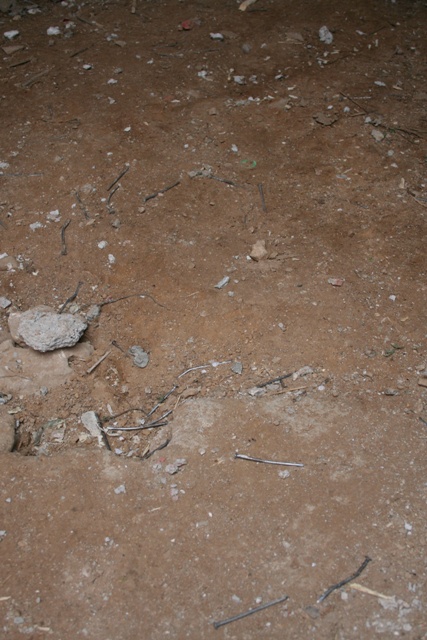
It took a full day just to clear the courtyard of debris and nails. I used an adjustable garden rake to do an initial clean of the courtyard floor. Raking in two directions, I hand picked the nails and put them in an old paint tin.
By the end of the day, when the courtyard was clear and clean, the tin was overflowing. It seems to be a worldwide trait of builders, that they leave mess where ever they have been.
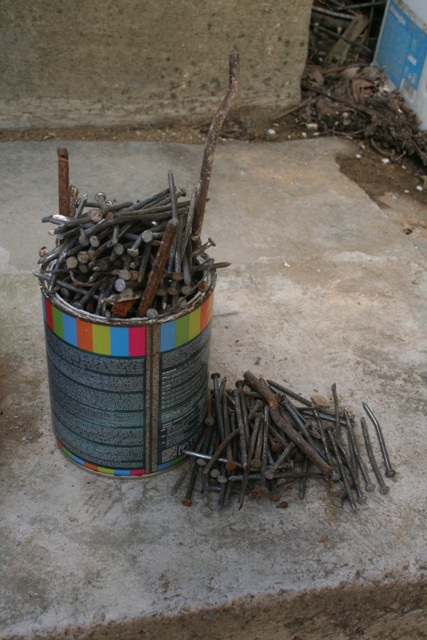
I’ll leave the courtyard for a few days to settle, then rake it again. Hopefully, that will mean I have removed all the nails.
I then spent another morning brushing the stone flags that line my entrance for the same reason. There were significantly fewer nails, but I still found some.
I woke up to rain on Friday morning. When I did a walk round inspection, I found that there was a pool of water in one corner of the new building. I am singularly unimpressed so I have told the builder to return and fix the problem.
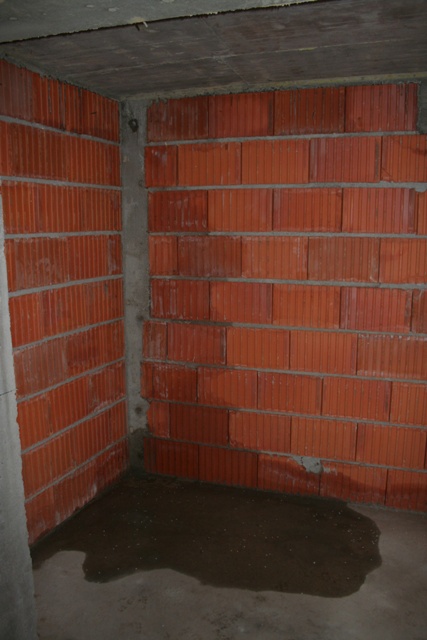
It is especially concerning because the corner is furthest away from the wind’s direction and we had only had 3 mm (3 lt/m²) when I took the photo, nothing compared to the 20 or 30 mm we can receive in a single thunderstorm.
The rain on Friday did however do one job perfectly. On Saturday morning I found two more nails which had been brought to the surface, and a couple of pieces of the wire used to join rebar.
Law of Unintended Consequences
Definitely not Triffids, the Daffodils, Narcissus pseudonarcissus, by the path leading to the old Donkey track are at their best at the moment.

The Myrobalan plum is also in full blossom, with the scent filling the air and the buzz of thousands of pollinating bees a background sound if you are anywhere close by.

The Law of Unintended Consequences has come into play though. I started fully protecting my young citrus saplings over the winter in December 2018. These young fruit trees have a year round protective steel frame, and a winter cover of shade material to prevent damage from the biting cold northern Bura winds.

But of course there are plants and especially bulbs I have planted, which are in the shadow of these shade tents. I noticed this year that only half the purple Crocus I planted were in flower on 23rd February. The rest have appeared this week.
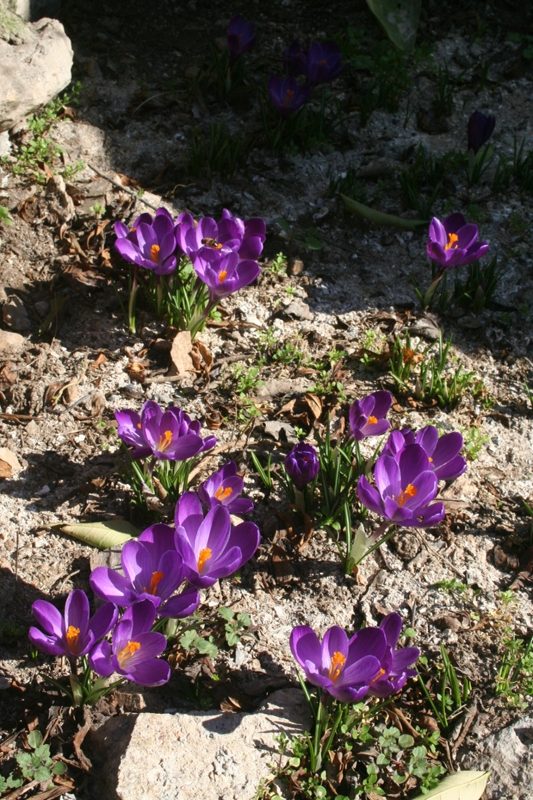
They are one of the indicator species in my Spring Watch calendar. They appeared later in 2019, by a week. But before I started using the shade tents, they were flowering around the 8th February, three weeks earlier than now.
This is because the closest protective frame also stops them receiving any low winter sun, apart from in one corner. The bulbs in this corner were the first to bloom, two weeks ahead of the rest.
I have noticed the same effect with Snowdrops that I have planted.
Clearly the restriction in bright light and sunshine to warm the soil, is enough to delay flowering by up to three weeks.
I’m going to move the snowdrops once the leaves have died back, and put them somewhere else, which is not in winter shade. NRC
5 Responses
Andrew Robinson
Another interesting read Norman. One saving grace of your solitary existence is that you are unlikely to contract Corona virus….. Take care matey!
Tony Griggs
Builders are a messy lot even in Australia Norman. I’ve been a builders “gopher” many times in the past! The only tradies worse are bricklayers!
Enjoy spring as we enter a cool autumn here in the Southern Hemisphere. We’ve had a wet summer here…
Tony
Marcy Fletchall
Hi, Thank you again for a great blog. I used this to capture my nails from builders:
https://www.homedepot.com/p/Steel-Core-17-in-Mini-Magnetic-Sweeper-42603/301118258?MERCH=REC-_-pipsem-_-202683817-_-301118258-_-N
Worked like a champ. I love the work you are doing on your new building. It’s so interesting and I’m always amazed at what you do with your hands and the skills you have.
Thanks for sharing. Stay safe. Warm regards,
Marcy
carole hodgson
Strangely a science teacher at my secondary school got me back interested in reading my giving me ‘Day of the Triffids’ to read. I enjoyed the genre and read all of John Wyndham’s books after that . My favourite was The Chrysalids and I liked the old film version ( black and white) of Village of the Damned.
I remember searching Dubai , when working in UAE, for magnets for my science team but at that time in 2006 had to import from suppliers in UK as couldn’t get them in quantities needed.
Terry H
It’s a shame you haven’t manage to hang onto an old Magnetic Roof lamp Norman. They had one of the best magnets in the base. Has helped me get lost keys etc out of drains or similar over the years. If needs must!!